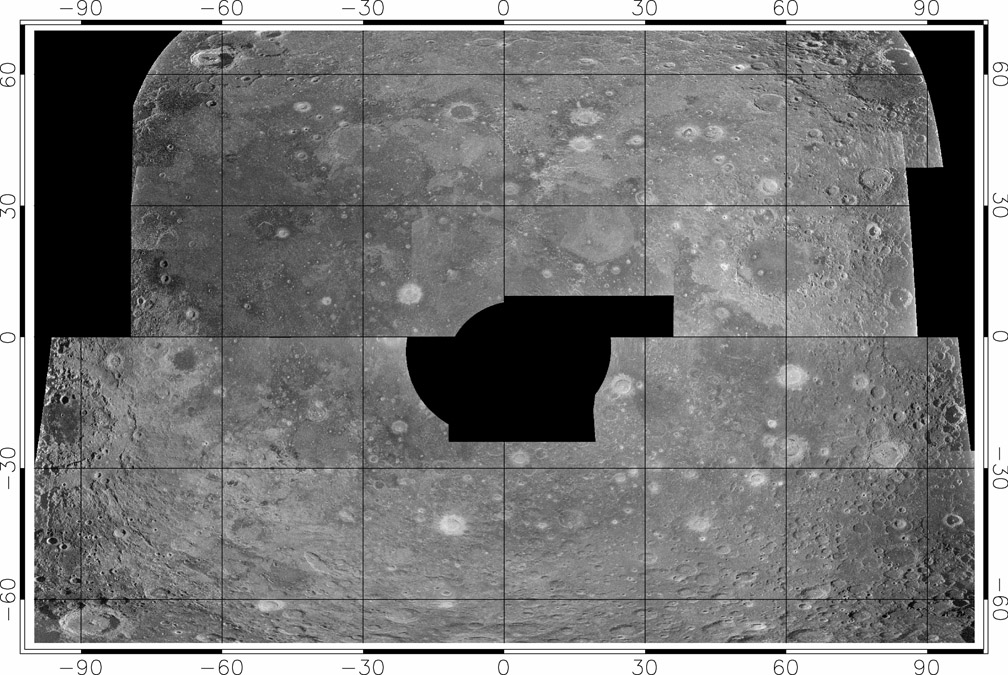
radar mosaic by Bruce Campbell and colleagues
Pity the poor human who can only see a tiny fraction of the radiation coming from everything in the universe. We construct understanding of the world from images created by our fantastically adept detector (eyeballs) based on just our little sliver of visible light. But since Newton discovered radiation beyond the visible we have progressively designed detectors for radiation at many other wavelengths. And the remarkable thing is that every new way (wavelength) of looking shows us something new. Although this is perhaps most spectacularly true for the galaxy, even our little rocky Moon tells different stories when observed in different wavelengths. And we can see that very clearly when looking at a new atlas of the lunar nearside, made with radar imaging. The images were created by using the 300 m diameter Arecibo radio telescope to send 70 cm radiation to the Moon, and measuring its reflection with the 105 m Byrd radio telescope. Details of the radar imaging, data processing and interpretation are available. The radar penetrates a few tens of meters beneath the surface providing info even on lunar armada, we can discover new things in this marvelous new atlas. For example, someone should catalog all the radar bright craters - they must be quite young. All thanks to Bruce and his coworkers!
Technical Details:
You may wonder why the central region of the Moon lacks data. The Arecibo telescope sends a collimated beam on energy to the Moon, but it spreads and bounces back from many different places. It is possible to identify where most reflections come from and create high resolution images, but near the center of the Moon as seen from Earth there is unresolvable ambiguity. But the dark corners are simply places where observing has not yet occurred at favorable librations; the NW corner will be observed in December.
The moasic above has been greatly reduced - examine the full scale one for a grand tour of an unfamiliar surface. Warning - its 19 mB.
Related Links:
The southern highlands - a radar view
Radar DHC
Yesterday's LPOD: Greek Globes, Astronomical Ignorance
Tomorrow's LPOD: Eclipse Triptych
COMMENTS?
Register, Log in, and join in the comments.



